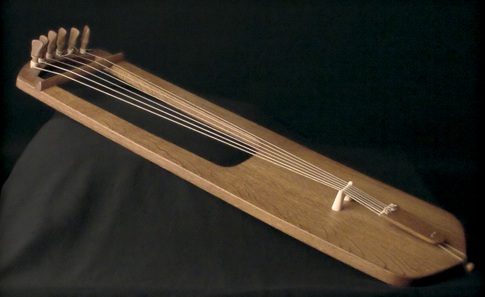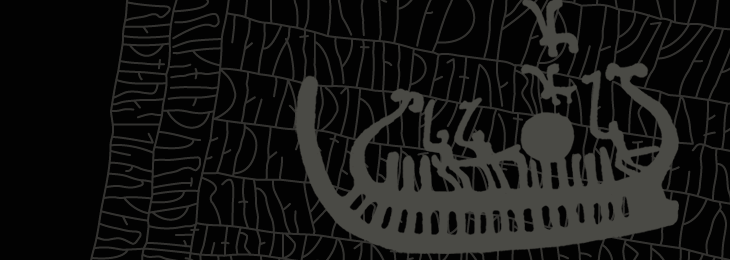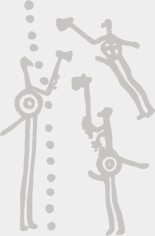The Harp
The 6-string harp used by Benjamin Bagby was built by Rainer Thurau (Wiesbaden, Germany), based on the remains of an instrument excavated from a 7th century Alemannic nobleman's grave in Oberflacht (south of Stuttgart). The remarkably intact pieces of oak clearly show a thin, hollow corpus with no soundholes. Like a similar instrument unearthed at Sutton Hoo in England, there are strong indications, supported by contemporary iconography, of six gut strings, a tailpiece and a free-standing bridge.

This ‘bardic’ instrument serves as a key piece of evidence in reconstructing the performance, for it provides a series of six tones. Although several possible tunings present themselves, the six tones used tonight were arrived upon through a careful study of early medieval modal theory, yielding a gapped octave which contains three perfect 5ths and two perfect 4ths. The resulting series of tones serves as a musical matrix, upon which the singer can weave both his own rhetorical shapes and the sophisticated metrics of the text. The Anglo-Saxon ear was finely-tuned to this web of sounds and syllable lengths, which was always experienced as an aural event, inextricably bound up with the story being told.
The harp is a relatively quiet instrument, but in the ear of the bard it rings with an endless variation of gestures, melodic cells and repetitive figurations which give inspiration to the shape of the vocalization: in the course of the story the bard may move imperceptibly or radically between true speech, heightened speech, speechlike song, and true song. The instrument acts as a constant point of reference, a friend and fellow-performer, a symbol of the scop and his almost magical role in the community of listeners.
For a more detailed description, see Benjamin Bagby’s article “Beowulf, the Edda, and the performance of medieval epic: Notes from the workshop of a reconstructed ‘singer of tales’” (PDF, 900 KB).


